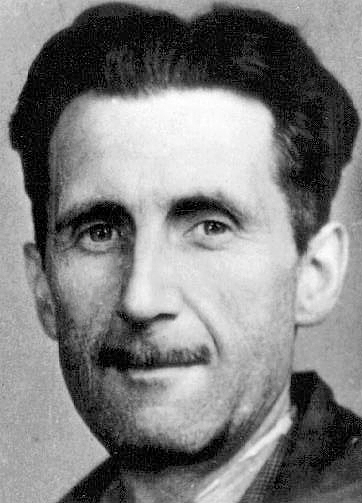Publication of George Orwell’s Nineteen Eighty-Four
George Orwell's last novel was published on 8 June, 1949.

George Orwell's 46th birthday was less than a month off when his last novel was published in London by Secker & Warburg, and five days afterwards by Harcourt Brace in New York. The socialist author of the 20th century's most devastating critique of left-wing totalitarianism had less than a year left to live. The idea for the book had come to him in 1943 and themes in an early outline included, 'The system of organized lying on which society is founded, the ways in which this is done (falsification of records, etc), the nightmare feeling caused by the disappearance of objective truth, leader-worship, etc...'. No one who knew London in the years immediately after 1945 will need to be told where the appalling shabbiness of the book's setting came from. The shortages, the bombsites, the regular failure of things to work properly, the prevailing dreariness - were drawn from real life.
Orwell eventually wrote the book on the Scottish island of Jura in the Inner Hebrides, to which he retreated from London in 1946, ill with tuberculosis after a severe haemorrhage, and depressed. His wife Eileen had died the year before, during an operation he had expected to be mere routine. Orwell took an abandoned farm called Barnhill close to the sea at the north end of the island, with his sister Avril and his adopted baby son Richard. There was a Robinson Crusoe streak in him and he kept chickens, went fishing and worked at being self-sufficient. The scenery was beautiful, the climate mild, but the house was at the end of a five-mile dirt track, the post appeared only twice a week, there was no telephone and Orwell was twenty-five miles from the nearest doctor. Surprisingly, there were quite a few callers, most of whom seem to have been a trial. There were some violent rows. Orwell tended to retreat behind the typewriter in his room.
Determined to finish the book, he refused to make any concessions to his state of health, which grew worse, and by the end of 1947 he was in the Hairmyres Hospital at East Kilbride, near Glasgow, with his lungs in a bad way. Tragically, he proved to be allergic to the new drug streptomycin, which afflicted him with side effects so severe that the treatment which might otherwise have saved his life had to be stopped. Back in Jura after seven months, he typed the final version of the book while lying in bed, which was awkward to manage, or sitting on a kitchen chair in his room, smoking like a funnel despite the condition of his lungs.
Early in 1949 Orwell had to go into a private sanitorium in the Cotswolds, where streptomycin was tried again and soon abandoned. Nineteen Eighty-Four sold so well (it has never stopped selling) that it would have given him a comfortable income for life, but it was too late and in September he was moved to University College Hospital in London. There in October, attired in a smoking jacket in his bed with a bottle of champagne waiting on a hospital trolley, he married Sonia Brownell, his second wife, and there, still hoping for a reprieve, he died on January 21st, 1950.
Orwell's friend Tosco Fyvel said years afterwards that, more than any book published after 1945, Nineteen Eighty-Four 'has subtly altered the popular impression of the way history has been proceeding'. It is a tribute to the book that the year 1984 eventually came and went without Orwell's nightmare vision having fully come about.




